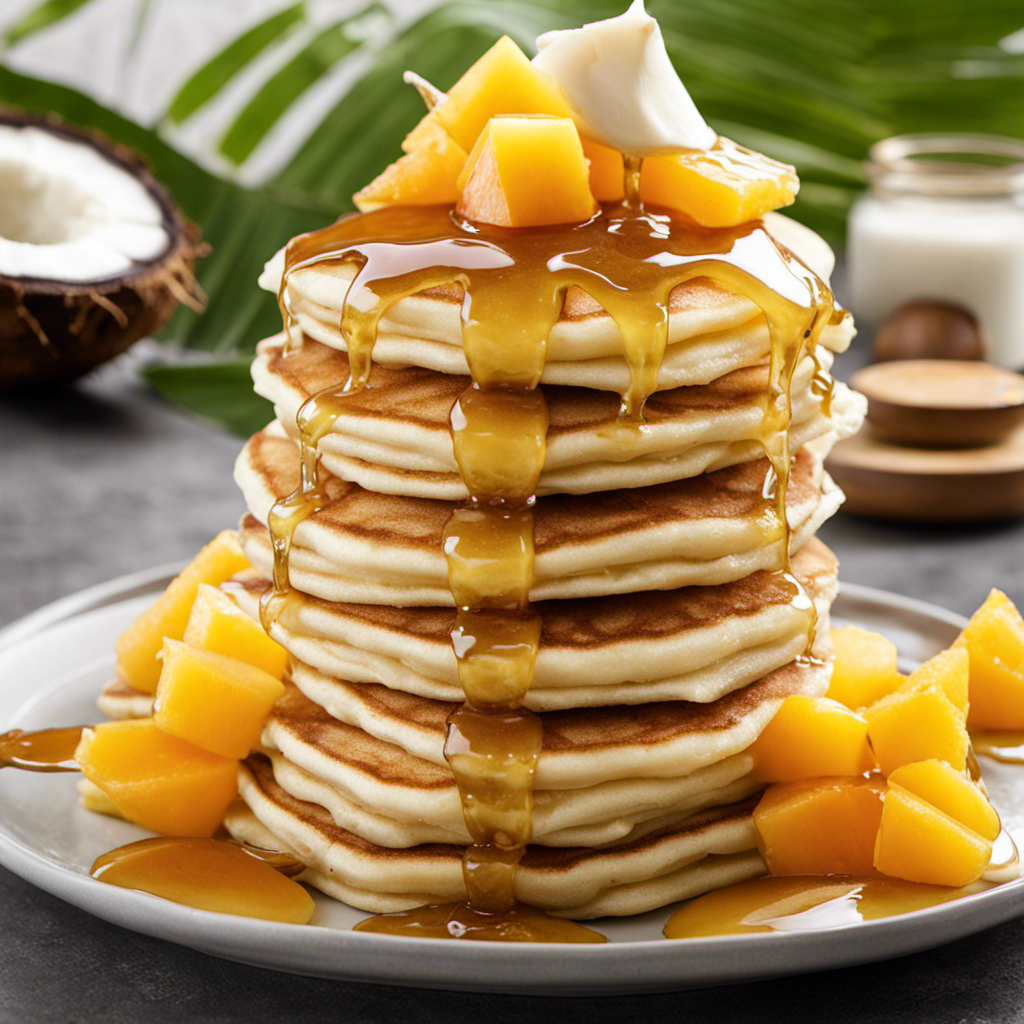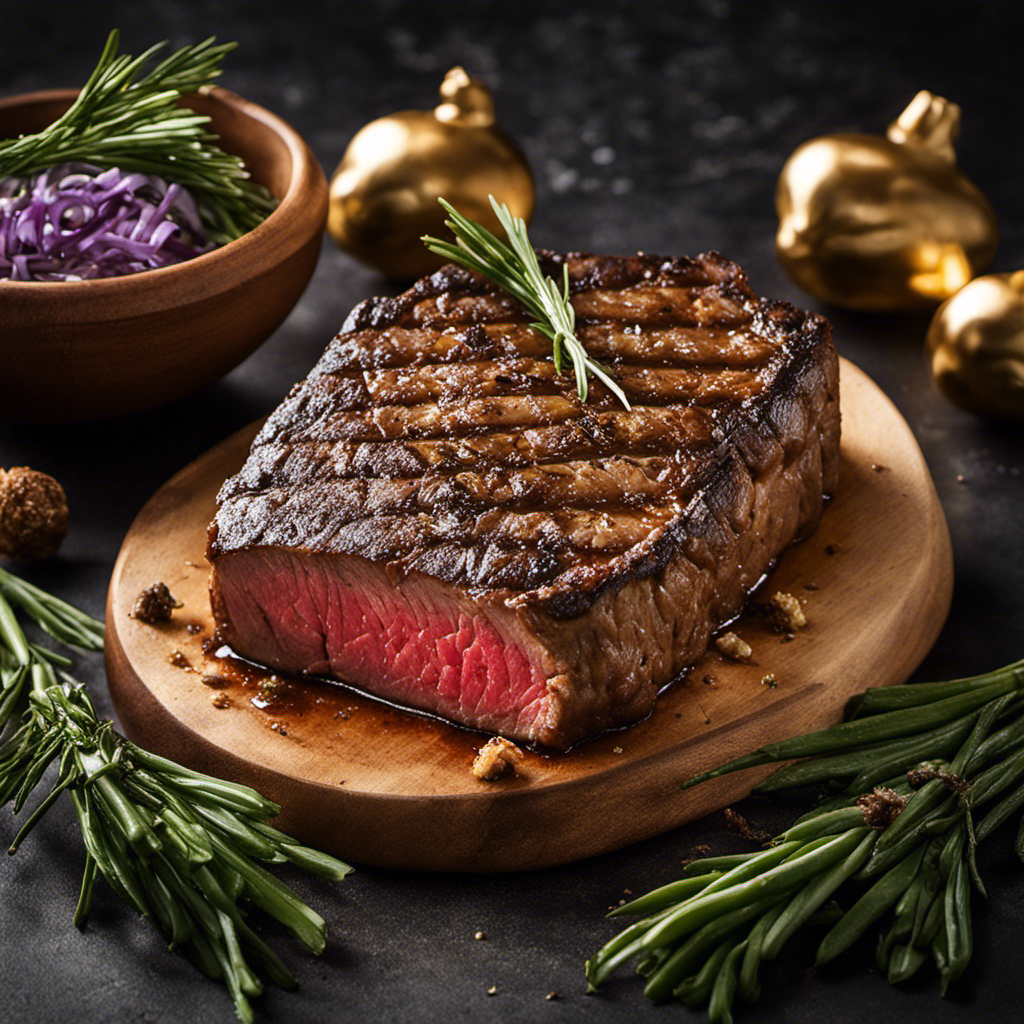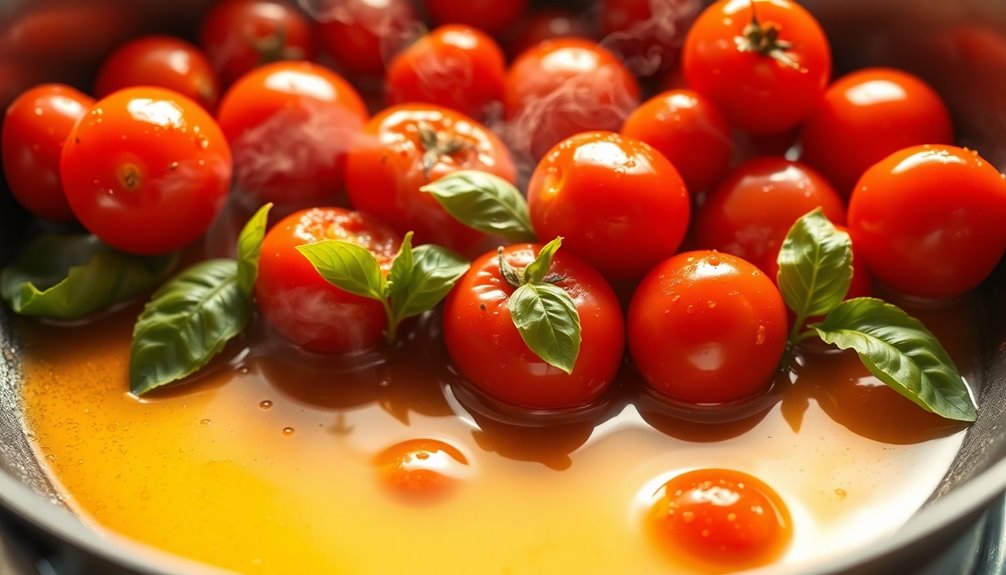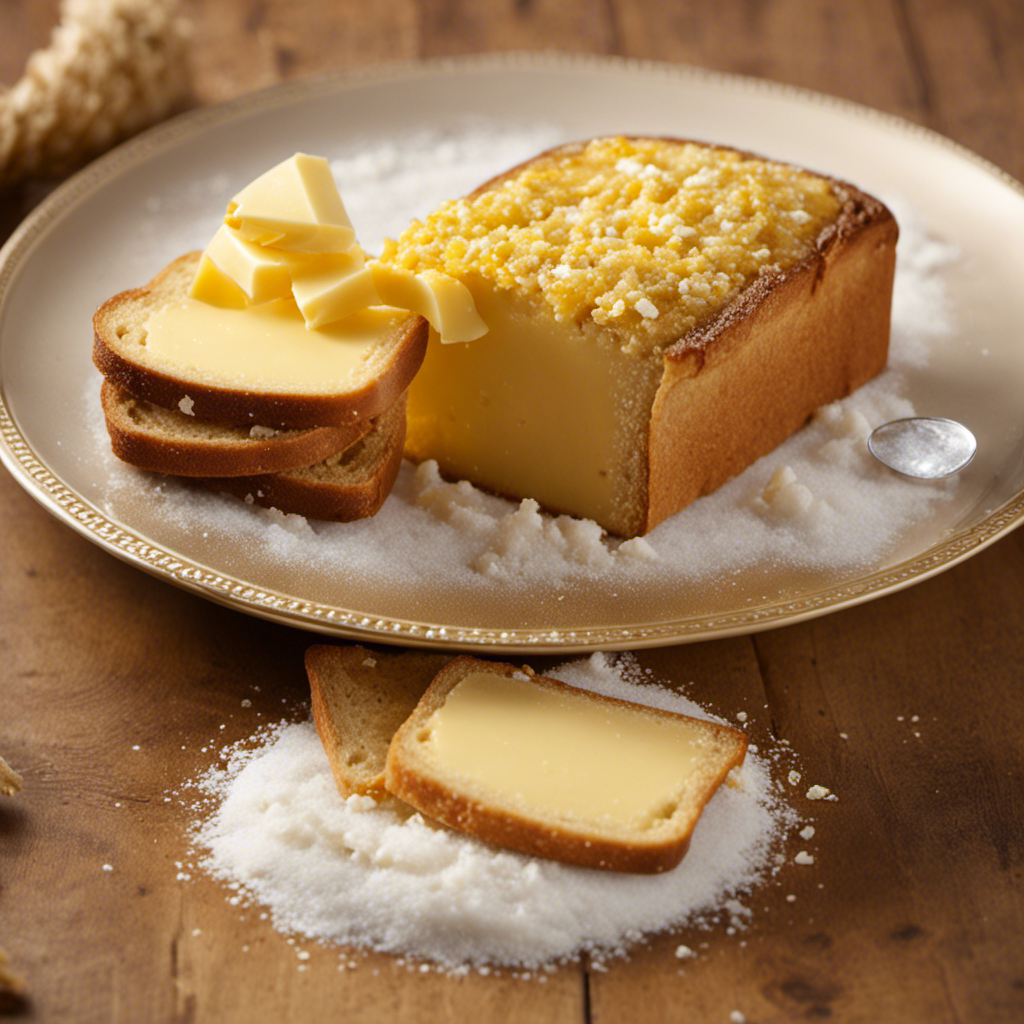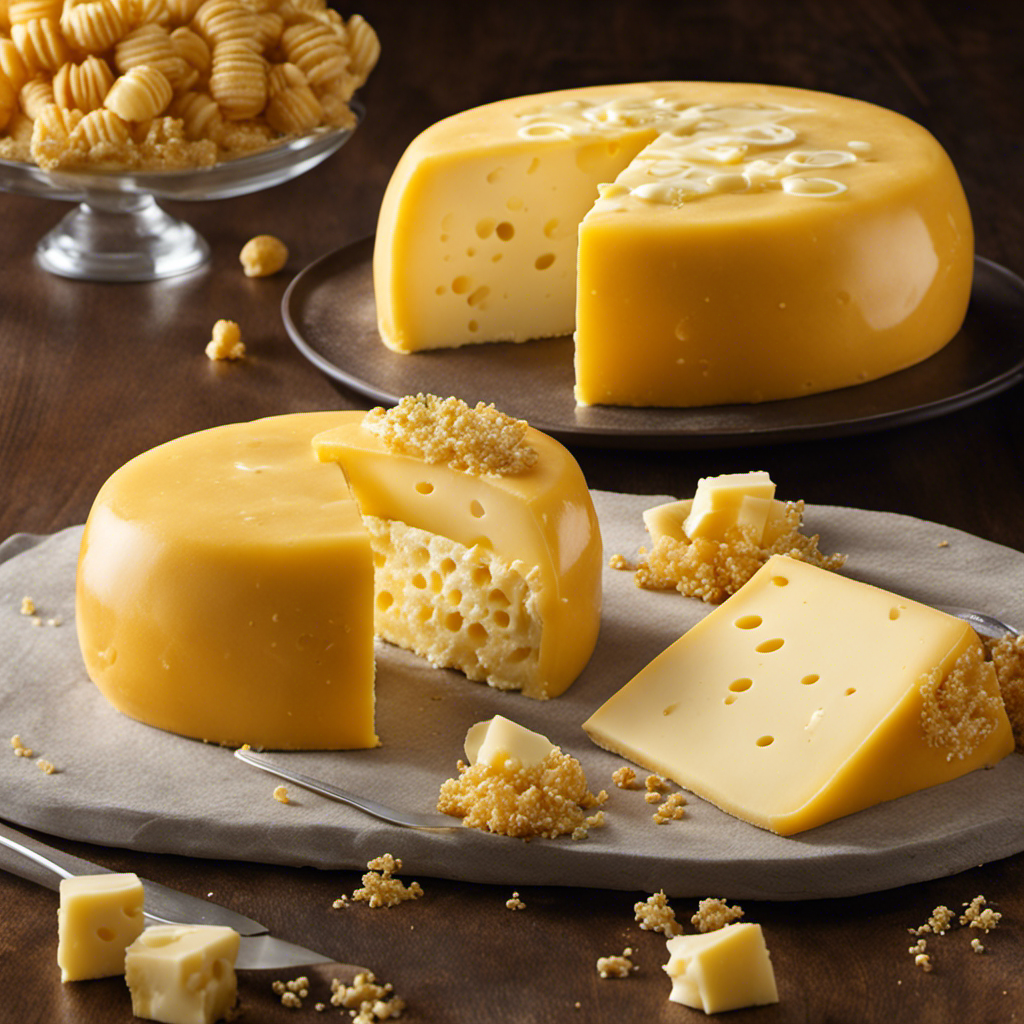Did you know that coconut butter is not only tasty but also loaded with health benefits?
With its creamy texture and rich flavor, coconut butter can be used in a variety of ways to enhance your meals and snacks.
In this article, we will explore the different ways you can incorporate coconut butter into your cooking, baking, and even skincare routine.
Get ready to discover the versatility of coconut butter and unlock its full potential in your everyday life.
Key Takeaways
- Coconut butter can be used as a spread on toast, in smoothies, baked goods, and sauces.
- It enhances the flavor and texture of dishes and adds a touch of tropical goodness to meals.
- Coconut butter offers numerous health benefits, such as boosting energy levels, supporting digestion, and providing healthy fats and nutrients.
- It serves as a nutritious alternative to traditional spreads and can be used as a dairy-free option.
Health Benefits of Coconut Butter
Coconut butter’s health benefits include improving digestion and boosting the immune system. Incorporating coconut butter into your diet can have a positive impact on your overall well-being. This versatile ingredient not only adds a rich and creamy texture to your dishes but also provides numerous health benefits.
Coconut butter is packed with healthy fats, which are essential for proper digestion. These fats can help to reduce inflammation in the gut, promote regular bowel movements, and improve nutrient absorption. Additionally, coconut butter contains lauric acid, a medium-chain fatty acid that has antimicrobial and antiviral properties. This can help to boost your immune system and protect against harmful bacteria and viruses.
To reap the health benefits of coconut butter, try incorporating it into your favorite recipes. Use it as a spread on toast, mix it into smoothies, or add it to your baking for a rich and nutty flavor. You can also use coconut butter as a substitute for dairy butter in cooking and baking, making it a great option for those with lactose intolerance or dairy allergies.
Cooking and Baking With Coconut Butter
Are you looking for a versatile ingredient that can enhance the flavor and texture of your dishes? Look no further than coconut butter.
Not only does it add a rich and creamy taste to both sweet and savory recipes, but it also offers a range of health benefits. From providing a boost of energy to supporting a healthy heart, incorporating coconut butter into your diet can be a game-changer.
Versatile Coconut Butter Uses
You can use coconut butter in a variety of ways to enhance the flavor and texture of your favorite dishes. Not only is it a delicious and nutritious ingredient, but it can also add a touch of tropical goodness to your meals. One popular way to use coconut butter is by adding it to your coffee. Simply melt a teaspoon of coconut butter in your hot coffee and blend until creamy. This adds a rich and creamy taste to your morning cup of joe. Another great use for coconut butter is in raw desserts. It can be used as a base for raw cheesecakes, energy balls, and even chocolate truffles. The possibilities are endless!
Here is a table showcasing some creative ways to incorporate coconut butter into your dishes:
| Dish | Coconut Butter Usage |
|---|---|
| Coffee | Melt a teaspoon in your hot coffee and blend until creamy. |
| Raw Desserts | Use as a base for raw cheesecakes, energy balls, and truffles. |
| Smoothies | Add a tablespoon for a creamy texture and tropical flavor. |
| Stir-fries | Use as a substitute for oil or butter for a coconut-infused taste. |
| Salad Dressing | Combine with lemon juice and herbs for a creamy and tangy dressing. |
Benefits of Using Coconut Butter
If you’re looking for a healthy and flavorful alternative, incorporating coconut butter into your diet can provide numerous benefits. Here are three reasons why you should consider adding coconut butter to your daily routine:
-
Boost your morning coffee: Adding a spoonful of coconut butter to your coffee can give it a creamy and rich flavor. It also provides a dose of healthy fats, which can help boost your energy and keep you feeling satisfied throughout the day.
-
Enhance your hair care routine: Coconut butter is not just for cooking! It can be used as a natural conditioner for your hair. Apply a small amount to your hair, leave it in for a few minutes, and then rinse it out. The result? Soft, shiny, and nourished locks.
-
Improve your skin health: Coconut butter has moisturizing properties that can benefit your skin. It can be used as a natural moisturizer, especially for dry or sensitive skin. Apply a thin layer of coconut butter to your skin after showering to keep it hydrated and supple.
By incorporating coconut butter into your daily routine, you can enjoy its unique flavor while reaping the benefits for your hair and skin.
Now, let’s explore how you can use coconut butter as a spread in your meals and snacks.
Using Coconut Butter as a Spread
Coconut butter is a versatile ingredient that can be used in a variety of recipes, making it a great addition to your pantry.
Not only does it add a rich and creamy texture to dishes like smoothies, baked goods, and sauces, but it also offers numerous health benefits.
Packed with healthy fats, fiber, and essential nutrients, coconut butter can support digestion, boost energy levels, and promote a healthy heart.
In addition to its nutritional value, coconut butter also serves as a nutritious alternative to traditional spreads like butter and margarine, providing a delicious and dairy-free option for those with dietary restrictions or preferences.
Versatility in Recipes
When using coconut butter, it’s important to note its versatility in recipes. Whether you’re baking or cooking savory dishes, coconut butter can add a delicious and unique flavor to your dishes.
Here are three creative ways to incorporate coconut butter into your recipes:
-
Baking with coconut butter: Replace traditional butter or oil with coconut butter in your favorite baking recipes. The creamy texture and subtle coconut flavor will enhance the taste of your cookies, cakes, and muffins.
-
Savory coconut butter recipes: Try using coconut butter in savory dishes like curries, stir-fries, or roasted vegetables. The richness of coconut butter adds a depth of flavor to these dishes, making them even more satisfying.
-
Spreading on toast or pancakes: Spread coconut butter on warm toast or pancakes for a tropical twist. The natural sweetness and creamy texture of coconut butter make it a healthier alternative to traditional spreads.
With its versatility, coconut butter can elevate your recipes and add a touch of tropical goodness. So go ahead and unleash your culinary creativity with coconut butter!
Health Benefits and Nutrition
To maximize the health benefits and nutrition of your dishes, it’s important to understand the versatility of incorporating coconut butter into your recipes. Not only does coconut butter add a rich and creamy flavor to your meals, but it also offers several health benefits. When it comes to weight loss, coconut butter can be a valuable addition to your diet. It contains medium-chain triglycerides (MCTs) that have been shown to increase metabolism and aid in fat burning. Additionally, coconut butter is a great choice for hair care. Its natural moisturizing properties can help nourish and strengthen your hair, promoting growth and preventing damage. So next time you’re cooking or looking for a hair treatment, consider adding coconut butter to your routine.
| Health Benefits | Nutrition Facts | Recipes |
|---|---|---|
| Aids in weight loss | Rich in healthy fats and fiber | Coconut butter energy balls |
| Nourishes and strengthens hair | Contains essential vitamins and minerals | Coconut butter hair mask |
| Boosts metabolism | Supports a healthy immune system | Coconut butter smoothie |
Alternative to Traditional Spreads
If you’re looking for a healthier option for spreads, consider trying delicious and nutritious coconut butter as an alternative. Made from pureed coconut meat, coconut butter is not only rich in flavor but also packed with essential nutrients.
Here are three reasons why you should incorporate coconut butter into your everyday meals:
-
Versatility: Coconut butter can be used in a variety of recipes, from baking to cooking. You can spread it on toast, use it as a substitute for butter in recipes, or add it to smoothies for a creamy texture.
-
Nutritional Benefits: Coconut butter is a great source of healthy fats, fiber, and vitamins. It contains medium-chain triglycerides (MCTs), which are easily digested and provide quick energy. It also supports a healthy metabolism and promotes a feeling of fullness.
-
Flavor Enhancement: Adding coconut butter to your meals can enhance the taste and aroma. It has a naturally sweet and nutty flavor that pairs well with both sweet and savory dishes.
Incorporating coconut butter into your everyday meals not only adds a delicious twist but also provides numerous health benefits. Try out some coconut butter recipes and start enjoying the goodness of this versatile spread.
Incorporating Coconut Butter Into Smoothies and Beverages
You can easily enhance the flavor and creaminess of your smoothies and beverages by adding a dollop of coconut butter. Not only does coconut butter provide a rich and tropical taste, but it also offers numerous health benefits. It is high in healthy fats and contains essential nutrients like vitamin E and iron. Incorporating coconut butter into your morning coffee can give it a velvety texture and a subtle coconut flavor. It blends perfectly with hot or iced coffee, creating a delicious and indulgent treat. Additionally, coconut butter can be used in desserts to add a creamy and decadent touch. Whether you’re making cookies, cakes, or even homemade ice cream, coconut butter can take your desserts to the next level. Give it a try and experience the delightful taste of coconut in your favorite beverages and desserts.
| Benefits of Coconut Butter | Ways to Use Coconut Butter |
|---|---|
| High in healthy fats | Blend into smoothies |
| Rich in vitamin E | Spread on toast |
| Contains iron | Use in baking |
| Creamy and delicious | Add to coffee |
| Tropical flavor | Mix into desserts |
Making Homemade Body and Skincare Products With Coconut Butter
Creating your own body and skincare products at home can be a fun and cost-effective way to incorporate the benefits of coconut butter into your daily self-care routine. Coconut butter is not only delicious in smoothies, but it also offers numerous benefits for your skin.
Here are three homemade body and skincare products you can make with coconut butter:
-
Homemade Body Scrub: Mix coconut butter with sugar or salt to create a luxurious exfoliating scrub. Gently massage the scrub onto your skin in circular motions to remove dead skin cells and reveal smooth, glowing skin.
-
Coconut Butter Face Mask: Combine coconut butter with honey and a squeeze of lemon juice to create a nourishing face mask. Apply the mask to your face and leave it on for 15-20 minutes before rinsing off. Your skin will feel refreshed and hydrated.
-
Coconut Butter Lip Balm: Melt coconut butter and mix it with beeswax to create a moisturizing lip balm. Apply it to your lips whenever they feel dry or chapped for instant hydration and a tropical scent.
Coconut Butter in Vegan and Dairy-Free Recipes
Include coconut butter in your vegan and dairy-free recipes to add a creamy and tropical flavor to your dishes. Coconut butter is a versatile ingredient that can be used in a variety of ways, including in vegan desserts and dairy-free icing. It is made from the flesh of mature coconuts and has a rich, buttery texture. Not only does it add a delicious flavor to your recipes, but it also provides a host of health benefits. Coconut butter is a good source of healthy fats, which can help support brain function and promote satiety. It also contains lauric acid, a type of fatty acid that has been shown to have antimicrobial and antiviral properties. So why not try adding coconut butter to your next batch of vegan cookies or dairy-free frosting? Your taste buds will thank you!
| Coconut Butter in Vegan and Dairy-Free Recipes | Benefits |
|---|---|
| Adds creamy and tropical flavor | |
| Versatile ingredient | |
| Good source of healthy fats | |
| Contains lauric acid | |
| Supports brain function and satiety |
Reference:
- Assunção, M. L., Ferreira, H. S., dos Santos, A. F., Cabral Jr, C. R., & Florêncio, T. M. (2009). Effects of dietary coconut oil on the biochemical and anthropometric profiles of women presenting abdominal obesity. Lipids, 44(7), 593-601.
Tips and Tricks for Storing and Using Coconut Butter
When storing coconut butter, it’s important to keep it in a cool, dry place to maintain its creamy texture. Here are some tips and tricks for storing and using coconut butter:
-
Store it properly: Keep your coconut butter in an airtight container to prevent moisture from getting in. This will help maintain its freshness and prevent it from spoiling.
-
Use it as a cooking ingredient: Coconut butter can be used as a substitute for butter or oil in baking recipes. It adds a rich, creamy flavor to cookies, cakes, and muffins.
-
Get creative with your recipes: Coconut butter is a versatile ingredient that can be used in a variety of dishes. Try using it as a spread on toast, adding it to smoothies for a creamy texture, or even using it as a base for homemade energy bars.
Conclusion
Congratulations! You’ve now learned all about the incredible uses of coconut butter. From its numerous health benefits to its versatility in cooking, baking, and even skincare, this natural ingredient is truly a game-changer.
So go ahead and embrace the creamy goodness of coconut butter in your daily life. It’s like a magical touch of paradise that adds a tropical twist to your favorite recipes and self-care routines.
So why wait? Dive into the world of coconut butter and let your taste buds and skin rejoice in its heavenly embrace.
